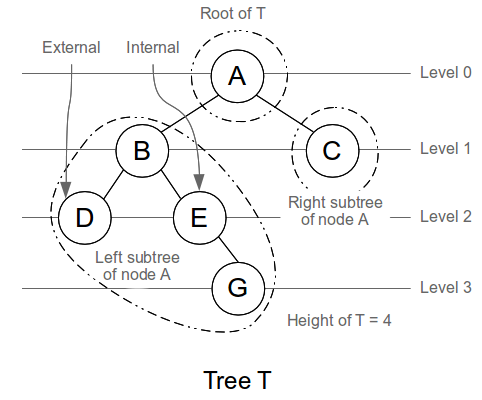Given an undirected graph, find its critical edges. A critical edge is one that when removed disconnects any two connected nodes.
The brute-force solution –removing an edge and checking for connectivity– will work. But this is an implementation using Tarjan’s DFS Bridge finding algorithm.
set<int> apNodes, apVis;
set<pair<int, int> > apEdges;
void articulationPointAndBridge(map<int, map<int, int> > &graph, int s) {
map<int, int> parent, num_dfs, num_low;
int children_s = 0, num_dfs_size = 0;
stack<int> stk;
parent[s] = s, stk.push(s);
// dfs
while (stk.size()) {
int u = stk.top();
// grey
if (apVis.find(u) == apVis.end()) {
num_dfs[u] = num_low[u] = num_dfs_size++;
apVis.insert(u);
children_s += u != s && parent[u] == s;
for (map<int, int>::reverse_iterator v = graph[u].rbegin();
v != graph[u].rend(); ++v)
// grey to white
if (apVis.find(v->first) == apVis.end())
parent[v->first] = u, stk.push(v->first);
// grey to grey
else if (parent[u] != v->first)
num_low[u] = min(num_low[u], num_dfs[v->first]);
}
// black
else {
if (parent[u] != u) {
// POINTS
if (num_dfs[parent[u]] <= num_low[u])
apNodes.insert(parent[u]);
// BRIDGES
if (num_dfs[parent[u]] < num_low[u])
if (u < parent[u])
apEdges.insert(make_pair(u, parent[u]));
else
apEdges.insert(make_pair(parent[u], u));
num_low[parent[u]] = min(num_low[parent[u]], num_low[u]);
}
stk.pop();
}
}
apNodes.erase(s);
if (children_s > 1)
apNodes.insert(s);
}
int main() {
string str;
int n, a, b, m;
while (cin >> n) {
// input
map<int, map<int, int> > graph;
for (int i = 0; i < n; ++i) {
cin >> a;
cin >> str;
stringstream ss(str.substr(1, str.length() - 2));
ss >> m;
for (int j = 0; j < m; ++j)
cin >> b, graph[a][b] = graph[b][a] = 1;
}
// solve
apVis.clear(), apEdges.clear(), apNodes.clear();
for (map<int, map<int, int> >::iterator i = graph.begin();
i != graph.end(); ++i)
if (apVis.find(i->first) == apVis.end())
articulationPointAndBridge(graph, i->first);
// print
cout << apEdges.size() << " critical links";
for (set<pair<int, int> >::iterator i = apEdges.begin();
i != apEdges.end(); ++i)
cout << endl << i->first << " - " << i->second;
cout << endl << endl;
}
}



